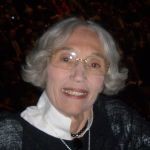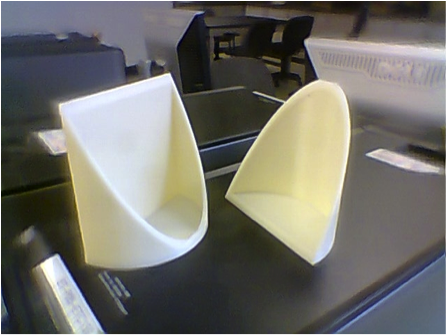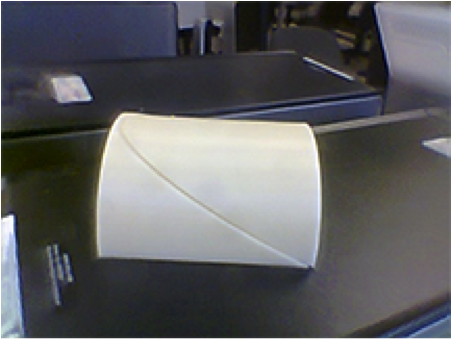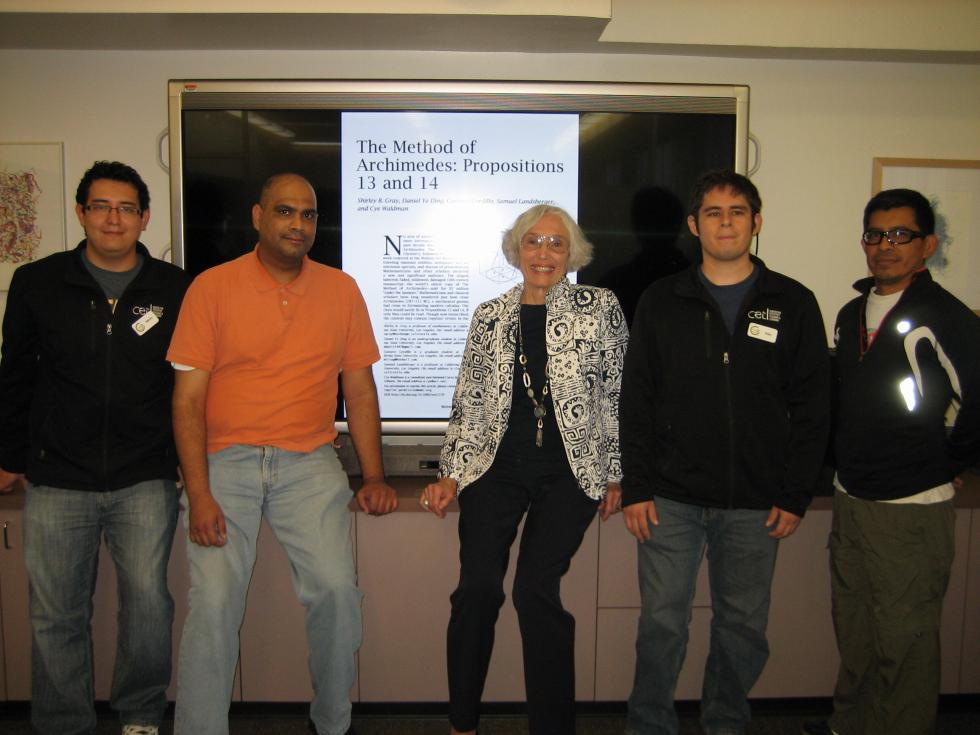
INTRODUCTION
- National Curve Bank 2nd Edition - 2019: Newest Release
- National Curve Bank Classic Home Page: Released: July 4, 2002
- Maria Gaetana Agnesi. Biography and Stamp Project: Released. January 1, 2001
Dr. Gray won the 2016 Outstanding Teacher Award of the Southern California-Nevada Section of the MAA. She is grateful for the opportunity to thank the many students and staff who have supported her throughout her career.
Dr. Cye H. Waldman, Sam Chyau and Dr. Gray collaborated on "Archimedes Redux: Center of Mass Application from The Method" published by Mathematical Association of America in The College Mathematics Journal, Vol. 49, NO.5, November, 2018, 346-352.
ISSN 1003 - 3092; MATHEMTICS, 2017
Dr. Gray, Dr. Stewart Venit and Dr. Russ Abbott have created and maintained a web site under the auspicies of the National Science Foundation and the Arnold and Mabel Beckman Foundation. The prestigious journal Science recognized our work in Fall, 2006. See <http://old.nationalcurvebank.org>.

Science, Vol. 314, October 27, 2006, p. 571.
In addition to hosting the NCB web site, Dr. Gray enjoys teaching MATH 320 History of Mathematics. The CSULA campus has a unique asset. Our campus is located near the Huntington Library in San Marino, CA. The Huntington's priceless collection of mathematical books and incunabula was recently augumented by the acquisition of 66.000 items from the Burndy Collection. Many works in both the old and new holdings are rare first editions. Thus, CSULA students have access to what may be called the finest collection in the history of mathematics and science in North America. Our History of Mathematics course offers students and faculty the unique pleasure of seeing these books and their magnificent illustrations.
TEACHING INTERESTS
Highlights of PROFESSIONAL ACTIVITIES
Among other delights, Gray has been privileged to examine the Bodleian Library's copy of Euclid's Elements (888 A.D.) at Oxford University. This is the world's oldest dated edition. Another historically important edition, ca. 900 A.D., is housed in the Vatican Library. In 2004, Gray was permitted to examine this copy once stolen by Napoleon and now returned to the archives of the Biblioteca Vaticana, Roma. This trip also permitted her the time to be a Reader in the famed Laurentian Library in Florence, Italy. Later, in 2005, she viewed the oldest surviving copy of the Nine Chapters on Mathematical Art in the Shanghai Library. Dr. Gray concurred when a student once told her, "You are a very lucky woman."
A "short list" of other favorite trips and talks includes:
- Many wonderful friends and colleagues in the U.K., Denmark, Sweden, Israel, China, Hong Kong and Italy.
- Seeing the island of Ven with memories of Tycho Brahe.
- A trip to Istanbul, Turkey, the home for many centuries of the palimpsest of Archimedes.
- A visit to the Mittag-Leffler Institute near Stockholm.
- A trip to Dublin, Ireland where she saw the Quaternion Bridge and examined the papers of Sir William Rowan Hamilton.
- A trip to Edinburgh, Scotland where she saw the home of James Clerk Maxwell.
- Many trips to Copenhagen, Denmark where she examined the papers of the great classical scholar Johan Ludvig Heiberg in the Kongelige Bibliotek.
- Many hours in the British Library in London.
- AMS-MAA National Meetings. The newly established National Curve Bank. Baltimore, MD, January 15, 2003 and all subsequent NSF Poster Sessions.
- Brown Bag Lunch Series, The National Curve Bank, Northwestern University, March, 2003.
- AMS - MAA National Meeting, San Antonio, Texas. The Lost Palimpsest of Archimedes: The Method. January, 1998.
- Gray's first web project was on Maria Gaetana Agnesi and includes the first translation of the closing of her famous calculus book.[ See < http://instructional1.calstatela.edu/sgray/Agnesi >.]
- Gray's first videotape project appeared on KLAC-TV Channel 58 and featured students learning to use the rather new graphing calculators in April, 1997. Using a Graphing Calculator had five airings of the tape just prior to the AP Calculus Exam.
Gray has especially enjoyed the network of friends that was created by participating in IHMT, Washington, D.C. Institute for the History of Mathematics in Teaching, sponsored by the MAA/NSF. June, 1996 and June, 1997 and the special interest group of the MAA-HOM-SIGMA.
RESEARCH
- Dr. Cye H. Waldman, Sam Chyau and Dr. Gray collaborated on "Archimedes Redux: Center of Mass Application from The Method" published by Mathematical Association of America in The College Mathematics Journal, Vol. 49, NO.5, November, 2018, 346-352.
- In conjunction with her efforts to organize support for the Vatican and Poste Italiane to issue stamps honoring Maria Gaetana Agnesi on the 300th anniversary of her birth (May 16, 1718), Dr. Gray wrote several articles including a review of Mazzotti's book reissued by The Johns Hopkins Press. See The College Mathematics Journal, Vol. 49, NO.3, May, 2018, 229-232.
- Dr. Gray and her collaborators have been featured in the October, 2015 issue of the Notices of the American Mathematical Society, one of the highest impact journals in the field of mathematics. (See: S. B. Gray, D. Y. Ding, G. Gordillo, S. Landsberger and C. Waldman, The Method of Archimedes: Propositions 13 and 14, Notices of the AMS, 62, 9, 2015, pp.1036-1040. The print article is supplemented by< http://curvebank.calstatela.edu/method/method.htm >.
- Dr. Gray took the opportunity to examine not retrospectively at the content of propositions in the famous Archimedean Method, but instead in terms of 21st century mathematics and technology. Moreover, she participated in every scholar’s quest to have a Eureka moment – she and her collaborators found the Golden Ratio, or Golden Mean, in their efforts to image the footprint of Archimedes. Thus, they found original mathematics that had neither been identified nor published for 2,300 years.
- This collaboration exquisitely united the mathematics, computer science and engineering skills of faculty, students, and industry representatives. In addition, this collaboration has generated ideas for faculty on other campuses. Those looking for undergraduate projects have followed this model by cloning the basic components of uniting math skills, computer software, and engineering applications in order to strengthen STEM education.
Dr. Gray and her collaborators were the first to publish 3-D Printer models involving mathematics on our campus, and perhaps the entire CSU.
3-D Printer Complement & Hoof
3-D Printer Hoof Half-cylinder
Also see < http://curvebank.calstatela.edu/method/method.htm > and < http://curvebank.calstatela.edu/supercurve/supercurve.htm >.
- Dr. Gray and her team were the first group on our campus to submit a Wikipedia entry on mathematics. This is also a first for the College of Natural and Social Sciences (NSS) < https://en.wikipedia.org/wiki/Superparabola >.
Dr. Gray and her collaborators have been featured on the American Mathematical Society’s Facebook page.< https://www.facebook.com/amermathsoc >(9/23/2015).
- After an extensive search of the literature, Dr. Gray and her collaborators were among the first to identify a unique mathematical curve. This, in itself, is another first for the CSU.
- See < http://curvebank.calstatela.edu/supercurve/supercurve.htm >.
- After an extensive search of the literature, Dr. Gray and her collaborators were among the first to identify a unique mathematical curve. This, in itself, is another first for the CSU.
See < http://curvebank.calstatela.edu/method/method.htm > > and < http://curvebank.calstatela.edu/supercurve/supercurve.htm >.
PUBLICATIONS AND PRESENTATIONS
Only the favorites
| Year | Publication/Presentation |
|---|---|
2018 | Dr. Cye H. Waldman, Sam Chyau and Dr. Gray collaborated on Archimedes Redux: Center of Mass Application from The Method published by The Mathematical Association of America College Mathematics Journal, Vol. 49, NO.5, November, 2018, 346-352. |
2018 | Review of Massimo Mazzotti's The World of Maria Gaetana Agnesi, Mathematician of God, reissued 2018 by John Hopkins University Press. Review published in the The Mathematical Association of America College Mathematics Journal, Vol. 49, NO.3, May, 2018, 229-232. |
2016 | < https://en.wikipedia.org/wiki/Superparabola > |
| 2015 | Shirley B. Gray, Daniel Ye Ding, Gustavo Gordillo, Samuel Landsberger, and Cye Waldman. The Method of Archimedes: Propositions 13 and 14, Notices of the American Mathematical Society, Volume 62, Number 9, October 2015. |
| 2013 | Forsén, Sture, Harry B. Gray, L. K. Olof Lindgren and Shirley B. Gray. &ldHome Page |
| 2012 | Gray, Shirley B. and Rice, Zebanya. “The Mayan Number System and Calendar: December 21, 2012: A Date of Opportunity” Mathematics Teacher [cover] 106(5), December, 2012-January, 2013, 338-344. |
| 2011 | http://curvebank.calstatela.edu/method/method.htm |
| 2010 | http://curvebank.calstatela.edu/harriot/harriot.htm http://curvebank.calstatela.edu/swan/swan.htm |
2009 | Gray, Shirley B., "BSHM detective story continued" BSHM Bulletin, 24 (3), 2009. , ,  , Science and Culture Review, 6 (3), 2009. , Science and Culture Review, 6 (3), 2009.Translation by Yibao XU. |
| 2008 | Gray, Shirley B., "A Centennial Celebration of Two Great Scholars," Notices of the American Mathematical Society, 55 (7), August, 2008, pp. 776-783. Gray, Shirley B., "On the Equals Sign - Our 'Twins': A Tour through Original Sources," The Mathematical Intelligencer, 30 (2), 2008, pp. 19-23. |
| 2006 | “Bent into Shape”, NETwatch (M. Leslie, ed.); Science, 2006, 314, 571. [(October 27, 2006)] “A Renie for the Brachistochrone, Short Takes (F. Gouvêa, ed.); Focus, 2006, 26(5), 21. Gray, Shirley B. and Gordillo, Gustavo. “The Brachistochrone: For the ‘shrewdest mathematicians of all the world’ “ CMC ComMuniCator. 30(3) 34 – 36, March, 2006. Gray, Mary and Gray, Shirley B. “Calculus: A Play in London” math HORIZONS, Mathematical Association of America. February, 2006. Gray, Shirley B., “A Multiplicity of Multiplications.” College Mathematics Journal, 37, Spring, 2006. |
| 2005 | Gray, Shirley B. “National Curve Bank Project” College Board AP Central. College Board AP Calculus AB program. January, 2005. Perkins, Gay with Shirley B. Gray “Life of a 1950s Homecoming Queen,” The Western Scholar. Western Kentucky University. Spring, 2005. |
| 2004 | Gray, Shirley B., "Hypatia", Mathematics for Students, Macmillan Reference USA. |
| 2003 | Gray, Shirley B., "Agnesi", Mathematics for Students, Macmillan Reference USA. |
| 2002 | < http://curvebank.calstatela.edu > < http://curvebank.calstatela.edu/home/home.htm > The National Science Foundation and the Arnold and Mabel Beckman Foundation have supported this project. |
| 2001 | MAA Online Book Review, Stephen Smale: The Mathematician Who Broke the Dimension Barrier, < http://maa.org.reviews/reviews.htm >, April, 2001. |
| 2001 | < http://instructional1.calstatela.edu/sgray/Agnesi/ > |
| 2001 | Gray, S. I. B. and Sandifer, C. Edward, The Sumario Compendioso, Mexico City, 1556: The New World's First Mathematics Book, Mathematics Teacher, NCTM, 94 (2) 98 - 103. |
| 2000 | Mathematics in the Age of Jane Austen: Essential Skills of 1800. Mathematics Teacher. NCTM, 93 (8) 670-679. |
| 2000 | CALTECH AT OXFORD, 40 YEARS ON. The American Oxonian; A Publication of the American Rhodes Scholar Foundation, LXXXVII (1) 1-8. |
| 1999 | Gray, S. I. B., and Malakyan, Tagui, The Witch of Agnesi: A Lasting Contribution from the First Surviving Mathematical Work by a Woman. A commemorative on the 200th Anniversary of her death. The College Mathematics Journal,Mathematical Association of America. Cover article, 30 (4), September, 1999, 258 - 268. Ms. Malakyan was a student in MATH 320. |
| 1999 | Gray, S. I. B., The Mathematics of Lewis Carroll, math HORIZONS, Mathematical Association of America. April, 1999, 18 - 23. |
| 1999 | Gray, Shirley I. B., THESE RUINS ARE STILL INHABITED: Caltech at Oxford. A Tribute to Muriel and George Beadle, Update for 1998. Engineering and Science, California Institutue of Technology, LXI (4), April, 1999. |
| 1999 | Gray, S. I. B., Heiberg and the Lost Palimpsest of Archimedes. The British Society for the History of Mathematics Newsletter, Summer, (39) 26-31. |
| 1999 | Gray, S. I. B., Mathematics Education Across the Poind in Great Britain. CMC ComMuniCator,23 (4), June, 1999, 46 - 47. |
| 1998 | Gray, S.I.B., A Mathematics Treasure in California, The Mathematical Intelligencer, 20(2), 41-46. |
| 1997 | Gray, Shirley B. and Mena, Robert A. Amusements in the History of Mathematics, PRIMUS, VII(4), 317-328. |
| 1997 | Gray, Shirley B., Producer and Director. Using a Graphing Calculator, Department of Mathematics and Computer Science, CSULA. A videotape featuring 25 students, faculty and staff. |
| 1996 | Gray, Shirley B. Earthquake Mathematics: An Infant Science. [This earthquake problem has been selected for LAUSD's Standards for High School Curriculum as a model for all students.] |
| 1992 | Gray, Shirley B. Fractal Math, Journal of Computers in Mathematics and Science Teaching, 1(1), 31-38. |
| 1992 | Gray, Shirley B. and Craig, Terence. G. Math Matching Ideas: A Generic HyperCard-HyperTalk Program, Journal of Computers in Mathematics and Science Teaching, 1(2), 235-250. |
At the Huntington Library, we have examined the following titles:
A Sampler of the Huntington Collection
Date | Mathematician | Title |
|---|---|---|
| 1279 | Ptolemy | Almagest |
| 1482 | Euclid | Elements (Several editions.) |
| 1543 | Copernicus | De Revolutionibus Orbium Coelestium |
| 1632 | Galileo | Dialogo Sopra Due Massimi Sistemi del Mondo |
| 1545 | Cardano | Ars Magna |
| 1637 | Descartes | Discours de la Méthode |
| 1687 | Newton | Principia |
| 1759 | Châtelet | Principia |
| 1748 | Agnesi | Instituzioni Analitiche http://instructional1.calstatela.edu/sgray/Agnesi |
| 1716 | L'Hôpital | Analyse des Infiniment petits |
| 1777 | Euler | Introductio In Analysin Infinitorum |
| 1801 | Gauss | Disquisitiones arithmeticae |
| 1566 | Apollonius | Conics |
| 1543,1544 | Archimedes | Opera Omni |
| 1556 | Juan Diez, O.F.M | Sumario Compendioso |
| 1557 | Recorde | "The whetstone of witte, which is the seconde part of Arithmetike . . ." |
| 1697 | Johann Bernoulli | Acta Eruditorium |
Comments on some of the books CSULA students seen at the Huntington Library:
Claudius Ptolemy
Ptolemy wrote the Almagest, or "the greatest," in the second century A.D. He produced the definitive Greek work in mathematical astronomy for determining the location of the planets. His mathematics and its geocentric theory stood unchallenged for 1400 years until Copernicus proposed his heliocentric theory in 1513.
The surviving copy at the Huntington uses the sexagesimal number system. It is thought to have been produced in the south of France, but the monastery, or atelier, is unknown.
As for esthetics, this copy is illuminated with gold and color adornment. The hand-printed vellum is not thick, but has an unforgettable texture of strength tempered with the appeal of the finest of translucent paper.
To view the Vatican's copy and other interesting titles: http://sunsite.unc.edu/expo/vatican.exhibit/exhibit/Main_Hall.html
Euclid
The Huntington has more than 30 editions of the Elements, but counting the number of editions is arbitrary, for not all books have survived in all editions. This collection was expanded (Fall, 2006) by the addition of the Burndy Library from M.I.T.
Following the invention of printing, Erhard Ratdolt's translation in 1482 was the first mathematics material to be printed. The manuscript opens immediately with 23 definitions, including those for the point, line and plane! Impressively, the Latin illustrations of "puntus, linea, plana," are clear to English readers 500 years later. On later pages, students will immediately recognize the "windmill" or "bride's chair" proof of the Pythagorean Theorem.
The Huntington has two copies of the first English translation by Sir Henry Billingsley (London, 1570). It contains pop-up, three-dimensional models, embedded in the text. For example, the book includes fold-out models of two perpendicular planes, a tetrahedron and a pyramid.
Many of the authors of the other editions are, themselves, famous, e.g., Lewis Carroll.
Copernicus
This first edition of Copernicus at the Huntington was the gift of Edwin Hubble of the "Hubble Space Telescope." It is nearly always on display in the Main Reading Room of the Library. Most of the other titles are seldom seen by the public.
Maria Agnesi and the Marquise du Châtelet
There are very few famous women in mathematics. We select the following for special mention:
| Title | Date |
|---|---|
Hypatia See: Gray, Shirley B. "Hypatia." An article requested for Mathematics for Students, an encyclopedia published by Macmillan Reference USA., 2002. | d. 415 AD |
| Châtelet Emilie Breteuil, Marquise du Châtelet | 1701 - 1749 |
Maria Agnesi Also see: Gray, Shirley B. "Agnesia." An article requested for Mathematics for Students, an encyclopedia published by Macmillan Reference USA.,2002. | 1718 - 1799 |
| Sophie Germain | 1776 - 1831 |
| Sonya Kovalevsky | 1850 - 1891 |
| Emmy Noether | 1882 - 1935 |
| CSULA is proud of our former colleague, Dr. Evelyn Boyd Granville, one of the first African-American women to earn a Ph.D. in mathematics (Spring, 1949). |
Apollonius
The Library also has Sir Edmond Halley's edition of Apollonius' works.
Euler
The CSULA Spring, 1997 students remarked that of all the books we had seen in chronological order, this was the first to look like a "math" book. By the 18th century, the equation and notation had evolved, as well as printing techniques, to have math equations, not verbal explanations, embedded in the text. Calculus students will immediately recognize that Euler was working on infinite series.
Brother Juan Diez, O.F.M.
The Sumario Compendioso in Spanish is the first book other than religious instruction printed in the entire Western Hemisphere. With a publication date of 1556 in Mexico City, it predates all North American settlement, e.g., Jamestown (1607), Plymouth Rock (1620), and Quebec City (1608).
The Huntington Library has been the Sumario 's home since 1920. It is one of three remaining known copies in the World, with the other two being in the British Museum in London and in the Biblioteca Nacional in Madrid.
The cover is primitive heavy leather. On opening the cover, the first thing one sees on the left is a recycled piece of printed matter that is pasted vertically. Paper must have been in very short supply in Mexico City in 1556. A gorgeous frontispiece is on the right opening page, and bears reference to the kingdoms of Peru (sic ).
In the summer of 2006 a student asked who was the very first to use the equals sign. The question was answered by showing him Robert Recorde's "The whetstone of witte, which is the seconde part of Arithmetike . . ." published in London (1557) at the Huntington Library.



